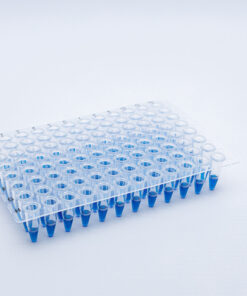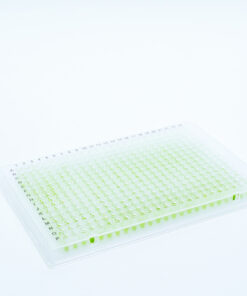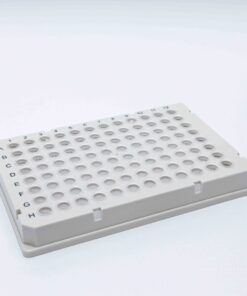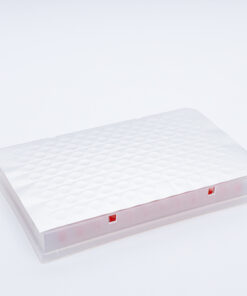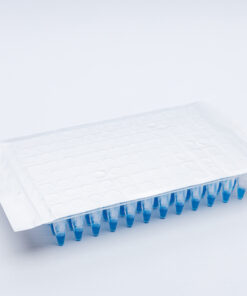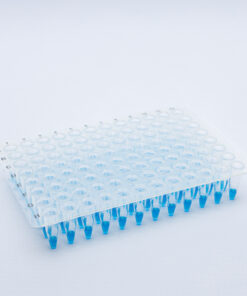Key takeaways:
qPCR, or quantitative polymerase chain reaction, and PCR tests are widely used for genetic and nucleic acid (DNA or RNA) analysis. Despite their differences, both qPCR and PCR require the same essential consumable: a microplate that holds the small amounts of sample and reagents required for the experiment. Sealing films are another laboratory consumable often used in these experiments to cover and protect the microplates during the testing process.
Knowing how to properly select microplates and sealing films is an important step when it comes to successful and reproducible qPCR and PCR testing as well as avoiding contamination.
In this ultimate guide, we’ll explore what you need to know about microplates and sealing films for qPCR and PCR tests. We’ll break down the differences between qPCR and PCR, the different types of microplates available, and how to choose a sealing film for qPCR and PCR experiments.
Table Of Contents
- What You Need to Know About PCR and qPCR
- The Role of Microplates and Sealing Films in qPCR and PCR Experiments
- Importance of Using the Right Microplates and Sealing Films for qPCR and PCR
- Factors to Consider When Choosing a Microplate for qPCR and PCR
- Factors to Consider When Choosing Sealing Films for qPCR and PCR
- Guidelines for Selecting the Correct Microplate and Sealing Film Combination for qPCR and PCR
- Best Practices for Using Microplates and Sealing Films in qPCR and PCR
- Maximising Accuracy and Efficiency in qPCR and PCR with iST’s Microplates and Sealing Films
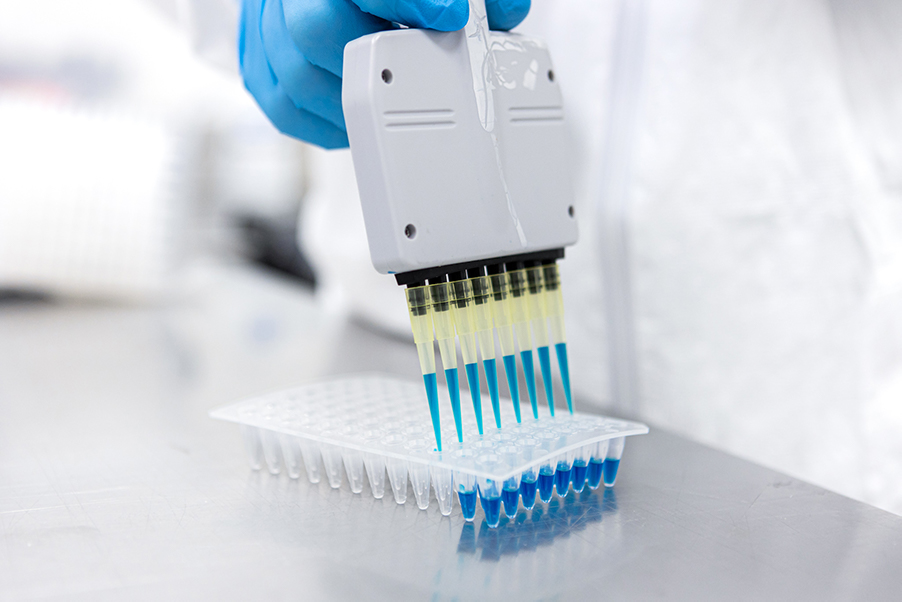
What You Need to Know About PCR and qPCR
What is PCR?
Polymerase chain reaction (PCR) is a laboratory technique that amplifies a specific DNA sequence, allowing for the detection and analysis of small amounts of DNA. This process involves repeatedly heating and cooling a sample in the presence of enzymes to replicate a specific DNA sequence.
What is qPCR?
Quantitative polymerase chain reaction (qPCR is a modified version of PCR that allows for the measurement of the amount of DNA present in a sample. qPCR is commonly used in biomedical research and clinical diagnostics for detecting infectious diseases, genetic mutations, and gene expression analysis.
Find out more about the differences between qPCR and PCR.
What are the common applications of qPCR and PCR in research?
PCR and qPCR are widely used techniques in many areas of research, including genetics, microbiology, and biomedicine.
- In genetics, PCR is commonly used to amplify and analyse specific DNA sequences, including those involved in genetic disorders or gene expression.
- In microbiology, PCR is used for the detection and identification of bacteria and viruses, such as in infectious disease diagnostics.
- In biomedicine, qPCR is often used to measure gene expression levels, which can provide insight into disease processes and drug efficacy.
Additionally, PCR is used in the fields of forensics, environmental science, and agriculture.
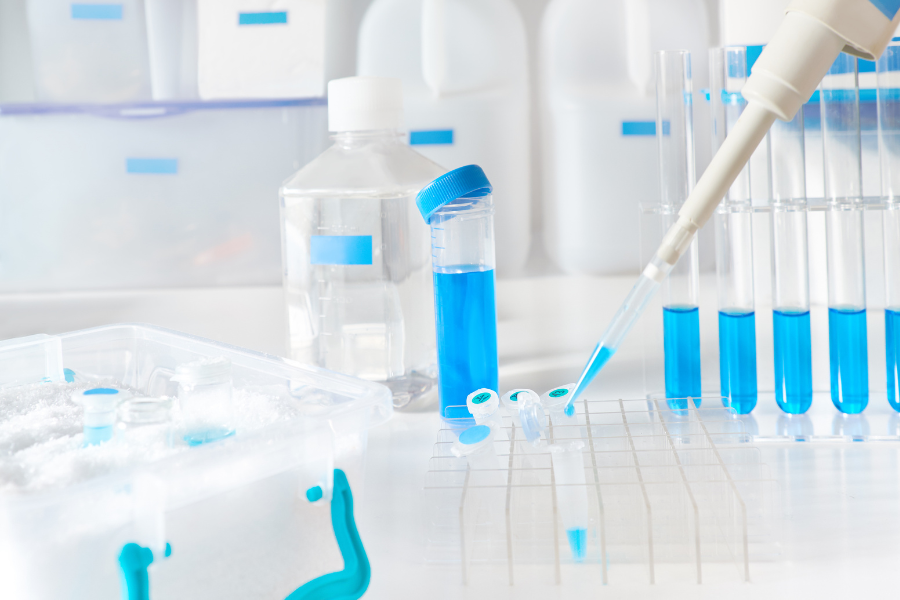
The Role of Microplates and Sealing Films in qPCR and PCR Experiments
Microplates and sealing films play a critical role in qPCR and PCR experiments by providing a platform for the amplification and detection of nucleic acids.
Microplates are typically used for the reaction mix, which contains the DNA template, primers, and nucleotides while sealing films are used to cover the plate and prevent contamination. The sealed microplate is then placed in a thermal cycler, which heats and cools the reaction mix to amplify the DNA.
Microplates are usually made from high-quality polypropylene (PP) and come in a variety of well formats, including 96-well and 384-well plates. These plates allow for the simultaneous processing of multiple samples and can be used with automated systems, making high-throughput experiments possible.
Sealing films are used to prevent contamination and evaporation during qPCR and PCR experiments. These films are typically made of plastic polymer and come in various sizes to fit different microplate formats. Sealing films can be used with or without adhesive, and some films are designed to be pierceable, allowing for easy access to the wells without removing the film.
Choosing the right microplate and sealing film is crucial for successful qPCR and PCR experiments. Factors to consider include the well format, sealing properties, and compatibility with the thermal cycler.
Researchers must also ensure that the microplate and sealing film do not interfere with the fluorescence detection used in qPCR experiments, as some materials can interfere with the detection of fluorescent signals.
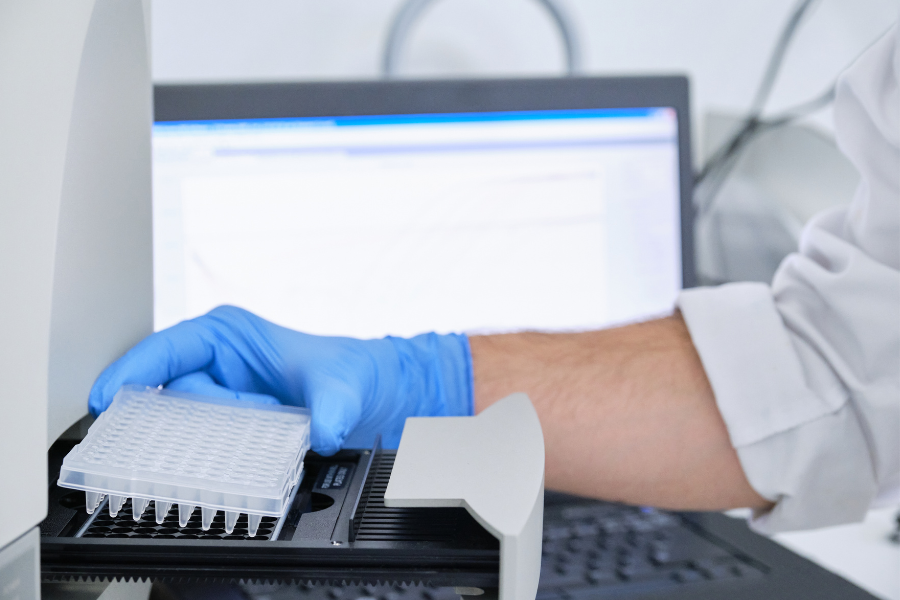
Importance of Using the Right Microplates and Sealing Films for qPCR and PCR
PCR and qPCR are powerful techniques that enable researchers to amplify and detect nucleic acid sequences with high precision and sensitivity. However, to achieve accurate and reproducible results, it’s essential to use the right microplates and sealing films for these assays. Here are some reasons why:
- Compatibility: Different microplates and sealing films are designed to work with specific thermal cyclers, PCR machines, and qPCR instruments. Using the wrong microplates or sealing films can result in poor sealing, uneven heating, and inconsistent amplification. This can lead to false positive or negative results, wasting time, money, and resources.
- Reproducibility: PCR and qPCR require precise control of temperature, pressure, and humidity. Any variation in these parameters can affect the quality and quantity of the amplified product. Using the right microplates and sealing films can help ensure that the conditions are consistent from one experiment to another, improving reproducibility and reliability.
- Efficiency: PCR and qPCR can be time-consuming and expensive, especially when dealing with large sample sizes or complex assays. Using the right microplates and sealing films (and using automated sealing equipment) can help optimise the reaction conditions, minimise the loss of reagents, and increase the throughput, making the process more efficient and cost-effective.
- Flexibility: Different microplates and sealing films offer various options for customization, such as well size, colour, material, and surface treatment. Choosing the right microplates and sealing films can help tailor the assay to the specific needs of the experiment, such as multiplexing, high-throughput screening, or single-cell analysis.
Have a unique sealing film requirement that needs a special solution? We offer Bespoke/OEMSealing Solutions. Find out more.

Factors to Consider When Choosing a Microplate for qPCR and PCR
When choosing a microplate for qPCR and PCR experiments, there are several factors to consider, including:
- Well format: The most common well formats for microplates are 96-well and 384-well plates. The choice of well format depends on the number of samples being processed and the amount of reaction mix required for each well.
- Material: Microplates are typically made of plastic, such as polystyrene or polypropylene. The material choice can affect the plate’s compatibility with certain solvents and reagents, as well as its ability to withstand high temperatures.
- Optical clarity: The optical clarity of the microplate can affect the detection of fluorescent signals during qPCR experiments. Clear plastic or glass plates are commonly used for fluorescence-based detection, while opaque plates may be used for other types of detection.
- Thermal conductivity: The thermal conductivity of the microplate can affect the heating and cooling rates during PCR experiments. Plates with higher thermal conductivity can reduce the time required for temperature changes and improve reaction efficiency.
- Compatibility with the thermal cycler: It is important to ensure that the microplate is compatible with the thermal cycler being used. Some thermal cyclers require specific types of plates or may have limitations on the maximum well depth or volume.
Researchers must carefully consider these factors to ensure optimal results in their qPCR and PCR experiments.
Types of Microplates for qPCR and PCR
There are several types of microplates available for qPCR and PCR experiments, each with its own advantages and disadvantages. Some common types of microplates include:
- Standard 96-well plates: These are the most commonly used microplates for qPCR and PCR experiments. They have a well volume of around 200 µL and are compatible with most thermal cyclers.
- Low profile 96-well plates: These plates have a lower profile than standard 96-well plates, which can reduce the volume of reaction mix required and improve heat transfer. However, they may be more prone to evaporation and require specialised sealing films.
- 384-well plates: These plates have smaller wells than standard 96-well plates, allowing for higher throughput and reduced reagent consumption. However, they may be more challenging to work with due to their smaller size and a greater number of wells may; they may also require specialised pipettes.
- Skirted and non-skirted plates: Skirted plates have a plastic skirt around the edge of the plate, which can provide additional stability and prevent plate distortion. Non-skirted plates do not have this feature but tend to have greater compatibility with a wider range of equipment.
The choice of microplate type depends on the specific experimental requirements, including the number of samples, reaction volume, and throughput. Researchers must carefully consider these factors to choose the most appropriate microplate for their qPCR and PCR experiments.
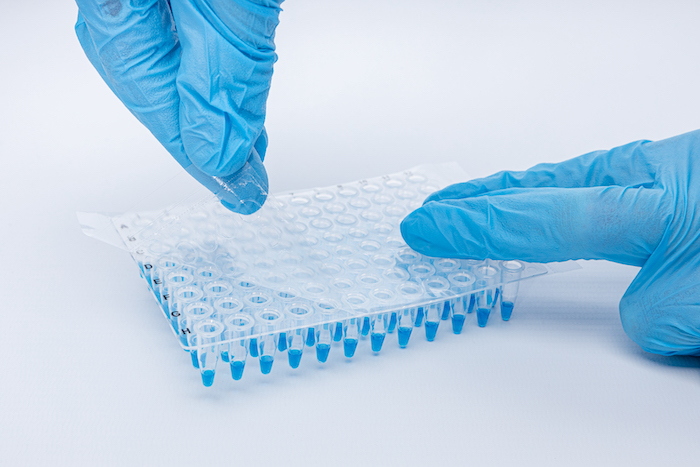
iST Scientific’s Microplate Recommendations for qPCR and PCR
At iST Scientific, we specialise in providing high-quality laboratory consumables and equipment. We offer a range of high-quality microplates that are suitable for qPCR and PCR applications. Here are some of our microplate recommendations:
- iST qPCR Plate: This plate is designed for use with qPCR assays and has a thin-walled construction that promotes rapid and efficient thermal transfer. It has a low profile and is compatible with most qPCR instruments.
- iST non-skirted PCR Plate: This plate is a standard 96-well format plate that is compatible with most thermal cyclers. It has a raised rim around each well to prevent contamination and a low evaporation lid to reduce sample loss.
- iST 384-Well PCR Plate: This plate has smaller wells than standard 96-well plates, allowing for higher throughput and reduced reagent consumption. It has a raised rim around each well to prevent contamination and a low evaporation lid to reduce sample loss.
- iST Exo-Frame PCR Plate: This plate has a rigid two-component hardshell design which eliminates warping and distortion during PCR testing. It is a skirted plate, which can provide additional stability and prevent contamination between wells.
Factors to Consider When Choosing Sealing Films for qPCR and PCR
Choosing the right sealing film is an important consideration when performing qPCR and PCR experiments. Here are some factors to consider:
- Compatibility: The sealing film should be compatible with the type of microplate being used and should be able to withstand the temperatures and pressures generated during the PCR reaction. You should also choose a film that does not interfere with the PCR reaction and cause inhibition or non-specific binding.
- Optical clarity: If the experiment involves fluorescence detection, the sealing film should be optically clear and not interfere with the signal.
- Adhesion: The sealing film should have good adhesion to the microplate to prevent evaporation and contamination.
- Puncture resistance: The sealing film should be puncture-resistant to prevent sample leakage and cross-contamination between wells (unless you specifically require pierceable sealing film).
- Chemical resistance: The sealing film should be resistant to chemicals commonly used in PCR experiments, such as ethanol and DMSO.
- Peelability: If required, the sealing film should be easy to peel off without leaving any residue or damaging the microplate.
- Cost: The cost of the sealing film should be taken into consideration, especially for high-throughput experiments.
The most common types of sealing films used for qPCR and PCR experiments include self-adhesive films and heat-sealable films.
Adhesive films are the most commonly used and are available in a range of materials such as polypropylene, polyester, and aluminium. Heat-sealable films are used for high-throughput experiments and require specialised heat-sealing equipment to apply the seal.
Choosing the right sealing film is essential for the success of qPCR and PCR experiments.
Researchers must carefully consider the factors mentioned above to choose the most appropriate sealing film for their specific experimental requirements.
Types of Sealing Films for qPCR and PCR
There are several types of plate sealing films available for qPCR and PCR experiments, each with its own advantages and disadvantages. Some common types of plate-sealing films include:
- Self-Adhesive Sealing Films for qPCR and PCR: Self-adhesive sealing films are a popular choice for qPCR and PCR testing as they are easy to use and provide a reliable seal. These films are made from a thin, transparent material with an adhesive backing that allows them to adhere to the microplate, creating a tight seal that prevents contamination and evaporation.
- Optically Clear Self-Adhesive Sealing Films: Optically clear self-adhesive sealing films are a type of sealing film that is specifically designed for fluorescence-based qPCR and PCR testing. These films are made from a clear, thin material that allows for optimal transmission of light, ensuring accurate and reliable fluorescence measurements.
- Heat-Sealable Sealing Films: Heat-sealable sealing films create a more permanent seal on the microplate through the application of heat. These films are made from a thin, flexible material that can be easily sealed using heat-sealing equipment. Heat-sealable sealing films provide a tight, secure seal that prevents contamination and evaporation and are suitable for both low- and high-temperature reactions.
Sealing film formats specific for PCR
- Individual Access Heat-Sealable Films: Individual access sealing films are laminate seals with 96 individual foil seal spots or 12 strips, each covering 8 wells on a removable backing. They are ideal for PCR applications using strip tubes and are available as sheets for manual and semi-automatic sealing equipment.
- Peelable Strip Heat-Sealable Films: Peelable strip heat-sealable films combine the convenience of self-adhesive films with the reliability of heat-sealable films. These films are made from a thin, transparent material with an adhesive backing that adheres to the microplate and a peelable strip for easy removal.
- Pierceable Heat-Sealable Films: These films have a thin layer that can be easily pierced with a pipette tip or other sharp object for sample retrieval, without breaking the seal. This makes them a good option for experiments that require frequent sample retrieval.
- DMSO/ Solvent Resistant Heat-Sealable Films: DMSO/solvent-resistant heat-sealable films are made from a durable material that can resist exposure to solvents and extreme temperatures.
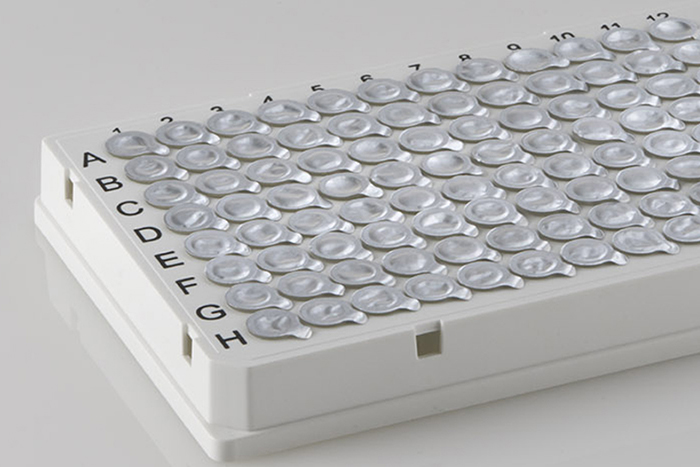
iST Scientific’s Sealing Film Recommendations for qPCR and PCR
At iST Scientific, we specialise in providing high-quality laboratory consumables and equipment, including a range of sealing films suitable for qPCR and PCR experiments. Here are our recommendations for selecting the most suitable sealing films for your qPCR and PCR experiments:
- IST-122 QuickSeal qOpticTM Self-Adhesive Sealing Film: This seal is a high-quality adhesive film with 96 optically clear windows that provides strong sealing integrity while allowing for improved optical properties. Made of a durable transparent polyester film, this peelable seal is suitable for qPCR and optical applications, including fluorescence or colourimetric measurements.
- IST-101 ClearASeal PeelTM Heat Sealing Film: Our ClearASeal Peel is the perfect solution for a cost-effective and reliable heat-sealing film that is suitable for qPCR and optical applications.
- IST-129 QuickSeal Foil PCR UltraTM Self Adhesive Sealing Film: QuickSeal Foil PCR Ultra Seal is an effective, strong adhesive aluminium foil seal, suitable for high-temperature applications. It prevents sample evaporation and has perforated end tabs for easy peeling. The pierceable foil tears in an irregular manner, preventing vacuum formation.
- IST-108 ThermASeal FoilTM Heat Sealing Film: The ThermASeal Heat Seal is a heavy-duty peelable foil seal that offers a 100% effective method of plate sealing for complete seal integrity. It provides a strong, solvent-resistant seal that is compatible with polypropylene plates, making it ideal for low-temperature compound storage and long-term room-temperature storage. The seal is also suitable for sample transportation due to its durability. The only way to pierce the seal is by using a blade, ensuring maximum sample protection.
iST Scientific offers a wide range of sealing film options suitable for qPCR and PCR experiments. Each seal provides complete seal integrity, preventing sample evaporation and contamination.
Guidelines for Selecting the Correct Microplate and Sealing Film Combination for qPCR and PCR
The compatibility between the microplate and sealing films is also crucial for qPCR and PCR testing. The sealing film provides a barrier to prevent contamination and evaporation during the reaction, which is essential for obtaining accurate and reliable results.
If the sealing film is not compatible with the microplate or does not adhere properly, it can lead to issues.
When selecting the correct combination of microplates and sealing films for qPCR and PCR here are some key factors to consider:
- Consider your desired application
Use the experimental requirements to help decide what type and format of microplate is best suited for your samples:
- The number of samples, sample volume required, and type of reaction being performed will help you choose the right microplate format for your needs.
- The reaction conditions are also important; if you plan to perform high-temperature reactions, such as hot-start PCR, make sure that the microplate and sealing film is temperature stable and can withstand the high temperatures without melting, warping, or degrading.
- Consider the optical properties of microplates and sealing films when performing qPCR, as some materials can interfere with quantification, leading to inaccurate results. Foil is not recommended due to its lack of optical clarity, but it may be suitable for some steps before being replaced with a clear film.
- Consider the compatibility of microplate and sealing film
Make sure that the sealing film is compatible with the microplate you are using. This can be determined by checking the manufacturer’s recommendations or by performing a compatibility test before running an experiment. If you need some expert help get in touch.
- Consider your workflow and equipment
Make sure that the microplate you choose is compatible with your existing equipment. You can also consider automated heat sealers if you are wanting to improve your workflow for better sealing and higher sample throughput.
- Choose quality consumables for the best results
While cheaper microplate and sealing film options may be available, they may not provide the same level of reliability and accuracy as higher-quality options resulting in poor results.
By considering these factors, you can select the correct combination of microplates and sealing films for your qPCR and PCR testing needs, ensuring accurate and reliable results.
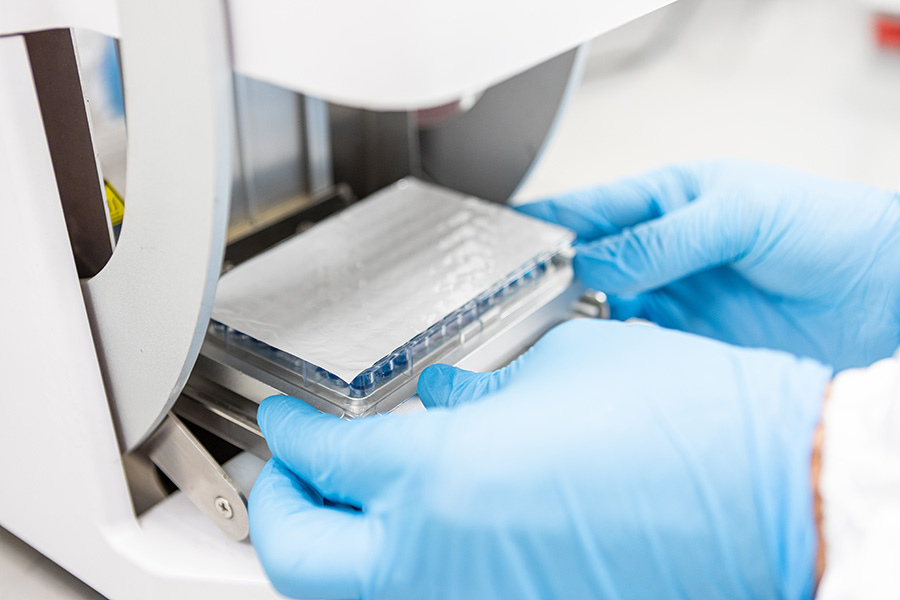
Best Practices for Using Microplates and Sealing Films in qPCR and PCR
When conducting qPCR and PCR experiments, it is important to select appropriate materials and follow best practices to ensure optimal performance. Some of these best practices include:
- Use a high-quality microplate that is compatible with your instrument and assay.
- Choose a sealing film that is suitable for your qPCR or PCR application, such as peelable, pierceable or adhesive films.
- Use proper sealing techniques:
- Avoid overfilling wells to prevent leakage and contamination.
- Apply the sealing film evenly and with consistent pressure to ensure a tight seal. Consider heat-sealing equipment if this is a problem you struggle with.
- Preventing Contamination:
- Use new microplates or adequately cleaned and dehydrogenated microplates for each experiment.
- Do not re-use sealing films
- Ensure you wear gloves
- Ensure you clean surfaces and work in a UV hood where possible
- Optimising Sample Volume
- Do not overfill microplates
- Select the correct size and volume for your experiment and
- Remember – liquids tend to pressurise and expand when heated!
- Storage and Handling Considerations
- Store microplates and sealing films in a cool, dry place to prevent damage and deterioration.
- Use appropriate sealing films and microplates for long-term storage, especially at low temperatures (recommend products i.e. foils seals, heat seals etc)
- When removing the sealing film, use a gentle and controlled motion to avoid disturbing the sample or creating aerosols.
- Dispose of used microplates and sealing films appropriately and in accordance with local regulations.
By adhering to these best practices, researchers can improve the quality of their data and achieve more reliable and consistent results in their qPCR and PCR experiments.

Maximising Accuracy and Efficiency in qPCR and PCR with iST’s Microplates and Sealing Films
Selecting the right microplate and sealing film for qPCR and PCR experiments is critical for accurate and reliable results. At iST Scientific, we offer a range of microplates and sealing films that are specifically designed for qPCR and PCR applications.
By following these guidelines and utilising iST Scientific’s recommended products, researchers can ensure the highest quality and integrity of their qPCR and PCR experiments.
Contact us to learn more about our products and how we can help you achieve your research goals.


